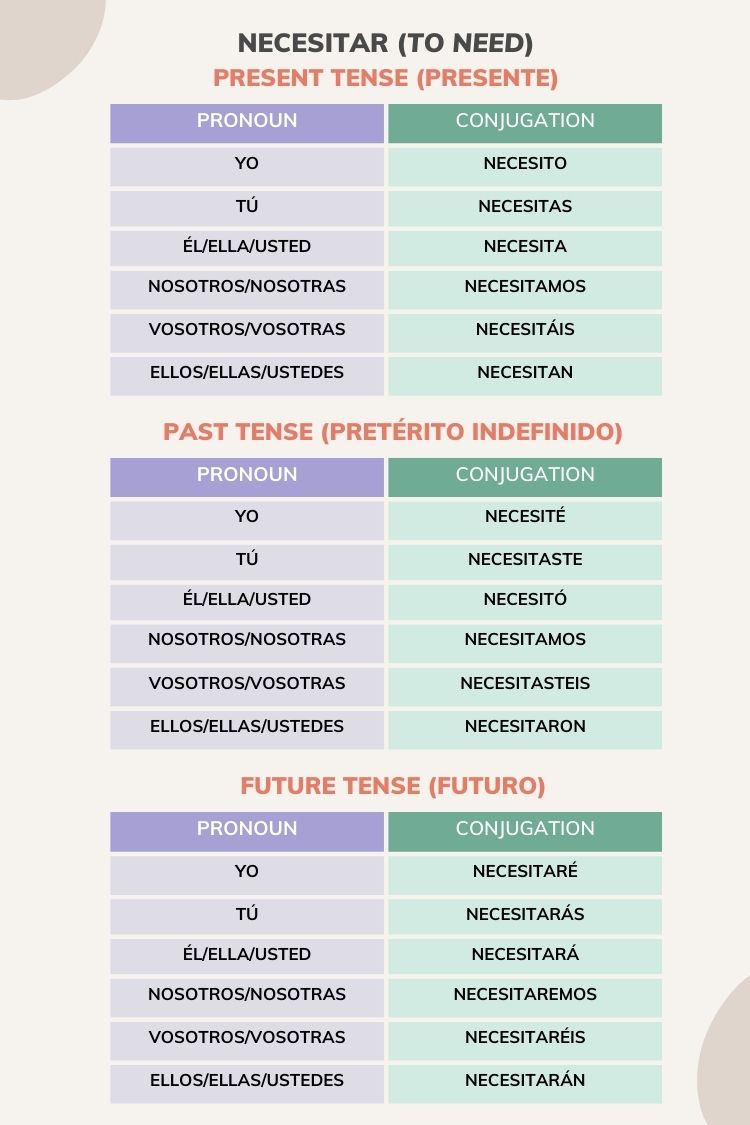Starting your Spanish learning journey can feel overwhelming, but focusing on the most common verbs is a great way to ease into the language. These basic Spanish verbs are used in everyday conversations and provide the foundation for building more complex sentences. Learning them first will make it easier for you to communicate right away.
Why Learn the Most Used Spanish Verbs?
In any language, verbs are essential. They tell us what’s happening and who’s doing it. Without verbs, we can’t express actions or describe states. Spanish verbs can be tricky because they change form depending on who is speaking, the tense, and the mood (whether it’s a command, a statement, or a wish). However, mastering the most important Spanish verbs first will make learning Spanish a lot more manageable.
Focusing on the 10 most common Spanish verbs is an excellent starting point. These verbs are used frequently in daily conversations and are necessary for forming basic sentences.
The 10 Most Common Spanish Verbs
Here is a list of the most commonly used Spanish verbs based on studies by Mark Davies and Real Academia Española (RAE):
-
Ser (to be)
"Ser" is used to describe permanent characteristics or identities.
Example: "Soy profesor" (I am a teacher).Click here to view the conjugation of "ser"
Pronoun Present Preterite Future Imperfect Yo soy fui seré era Tú eres fuiste serás eras Él/Ella/Ud es fue será era Nosotros somos fuimos seremos éramos Vosotros sois fuisteis seréis erais Ellos/Ellas/Uds son fueron serán eran -
Estar (to be)
"Estar" is used to describe temporary conditions or locations.
Example: "Estoy feliz" (I am happy).Click here to view the conjugation of "estar"
Pronoun Present Preterite Future Imperfect Yo estoy estuve estaré estaba Tú estás estuviste estarás estabas Él/Ella/Ud está estuvo estará estaba Nosotros estamos estuvimos estaremos estábamos Vosotros estáis estuvisteis estaréis estabais Ellos/Ellas/Uds están estuvieron estarán estaban -
Tener (to have)
"Tener" is used to talk about possession, age, and certain conditions.
Example: "Tengo hambre" (I am hungry).Click here to view the conjugation of "tener"
Pronoun Present Preterite Future Imperfect Yo tengo tuve tendré tenía Tú tienes tuviste tendrás tenías Él/Ella/Ud tiene tuvo tendrá tenía Nosotros tenemos tuvimos tendremos teníamos Vosotros tenéis tuvisteis tendréis teníais Ellos/Ellas/Uds tienen tuvieron tendrán tenían -
Hacer (to do, to make)
"Hacer" is versatile, used for both actions and creating things.
Example: "Hago la tarea" (I do my homework).Click here to view the conjugation of "hacer"
Pronoun Present Preterite Future Imperfect Yo hago hice haré hacía Tú haces hiciste harás hacías Él/Ella/Ud hace hizo hará hacía Nosotros hacemos hicimos haremos hacíamos Vosotros hacéis hicisteis haréis hacíais Ellos/Ellas/Uds hacen hicieron harán hacían -
Poder (to be able to)
"Poder" expresses ability or permission.
Example: "Puedo conducir" (I can drive).Click here to view the conjugation of "poder"
Pronoun Present Preterite Future Imperfect Yo puedo pude podré podía Tú puedes pudiste podrás podías Él/Ella/Ud puede pudo podrá podía Nosotros podemos pudimos podremos podíamos Vosotros podéis pudisteis podréis podíais Ellos/Ellas/Uds pueden pudieron podrán podían -
Decir (to say, to tell)
This verb is used when talking or telling something to someone.
Example: "Digo la verdad" (I tell the truth).Click here to view the conjugation of "decir"
Pronoun Present Preterite Future Imperfect Yo digo dije diré decía Tú dices dijiste dirás decías Él/Ella/Ud dice dijo dirá decía Nosotros decimos dijimos diremos decíamos Vosotros decís dijisteis diréis decíais Ellos/Ellas/Uds dicen dijeron dirán decían -
Ir (to go)
"Ir" is essential for talking about movement or plans.
Example: "Voy al cine" (I’m going to the movies).Click here to view the conjugation of "ir"
Pronoun Present Preterite Future Imperfect Yo voy fui iré iba Tú vas fuiste irás ibas Él/Ella/Ud va fue irá iba Nosotros vamos fuimos iremos íbamos Vosotros vais fuisteis iréis ibais Ellos/Ellas/Uds van fueron irán iban -
Ver (to see)
"Ver" is used to talk about seeing or observing.
Example: "Veo a mis amigos" (I see my friends).Click here to view the conjugation of "ver"
Pronoun Present Preterite Future Imperfect Yo veo vi veré veía Tú ves viste verás veías Él/Ella/Ud ve vio verá veía Nosotros vemos vimos veremos veíamos Vosotros veis visteis veréis veíais Ellos/Ellas/Uds ven vieron verán veían -
Dar (to give)
"Dar" is useful for talking about giving something to someone.
Example: "Te doy un regalo" (I give you a gift).Click here to view the conjugation of "dar"
Pronoun Present Preterite Future Imperfect Yo doy di daré daba Tú das diste darás dabas Él/Ella/Ud da dio dará daba Nosotros damos dimos daremos dábamos Vosotros dais disteis daréis dabais Ellos/Ellas/Uds dan dieron darán daban -
Saber (to know)
"Saber" is used for knowledge or knowing how to do something.
Example: "Sé hablar español" (I know how to speak Spanish).Click here to view the conjugation of "saber"
Pronoun Present Preterite Future Imperfect Yo sé supe sabré sabía Tú sabes supiste sabrás sabías Él/Ella/Ud sabe supo sabrás sabía Nosotros sabemos supimos sabremos sabíamos Vosotros sabéis supisteis sabréis sabíais Ellos/Ellas/Uds saben supieron sabrán sabían
Building on These Verbs
Once you’ve mastered these most important Spanish verbs, it’s time to broaden your vocabulary by learning more verbs. These additional verbs will help you express a wider range of actions and ideas. Remember, Spanish verbs fall into three categories based on their endings: -AR, -ER, and -IR. Each group follows specific conjugation patterns, though many common verbs are irregular.
Here’s an example of conjugating the regular verb hablar (to speak) in the present tense:
- Yo hablo (I speak)
- Tú hablas (You speak)
- Él/Ella/Usted habla (He/She/You speak)
- Nosotros/Nosotras hablamos (We speak)
- Ellos/Ellas/Ustedes hablan (They/You all speak)
As you can see, regular verbs follow a pattern that’s easy to recognize. However, many of the most commonly used Spanish verbs are irregular, meaning their conjugations don’t follow these regular patterns.
Tackling Irregular Verbs
Irregular verbs, like ir (to go), are among the most frequently used in Spanish, so it’s important to memorize their unique conjugations. For instance, in the present tense, the verb ir is conjugated like this:
- Yo voy (I go)
- Tú vas (You go)
- Él/Ella/Usted va (He/She/You go)
- Nosotros/Nosotras vamos (We go)
- Ellos/Ellas/Ustedes van (They go)
Irregular verbs may seem intimidating at first, but with practice, you’ll quickly become familiar with their forms.
Expanding Your Knowledge: 75 Common Spanish Verbs
To expand your ability to communicate in Spanish, here’s a list of 75 important Spanish verbs to learn. These verbs cover a wide range of common actions, feelings, and states, making them essential for everyday conversation:

- Ser (to be)
- Estar (to be)
- Tener (to have)
- Hacer (to make, to do)
- Poder (to be able to)
- Decir (to say, to tell)
- Ir (to go)
- Ver (to see)
- Comer (to eat)
- Tomar (to take)
- Amar (to love)
- Andar (to walk)
- Aprender (to learn)
- Ayudar (to help)
- Beber (to drink)
- Buscar (to look for)
- Cambiar (to change)
- Cocinar (to cook)
- Comprar (to buy)
- Comprender (to understand)
- Conducir (to drive)
- Conocer (to know)
- Creer (to believe)
- Dar (to give)
- Deber (to have to)
- Decidir (to decide)
- Descansar (to rest)
- Dormir (to sleep)
- Empezar (to begin)
- Encontrar (to find)
- Entender (to understand)
- Escribir (to write)
- Escuchar (to listen)
- Esperar (to wait)
- Estudiar (to study)
- Ganar (to win)
- Gustar (to like)
- Haber (to have)
- Hablar (to speak)
- Jugar (to play)
- Lavar (to wash)
- Limpiar (to clean)
- Llamar (to call)
- Leer (to read)
- Llegar (to arrive)
- Mirar (to look)
- Morir (to die)
- Mover (to move)
- Necesitar (to need)
- Oír (to hear)
- Pagar (to pay)
- Pensar (to think)
- Poner (to put)
- Preguntar (to ask)
- Quedar (to remain)
- Querer (to want)
- Recibir (to receive)
- Regresar (to return)
- Saber (to know)
- Salir (to leave)
- Sentir (to feel)
- Trabajar (to work)
- Traducir (to translate)
- Traer (to bring)
- Usar (to use)
- Venir (to come)
- Viajar (to travel)
- Vivir (to live)
- Volver (to return)
- Ocurrir (to happen)
- Permitir (to allow)
- Abrir (to open)
- Llevar (to carry)
- Describir (to describe)
- Mostrar (to show)
Tips for Learning Spanish Verbs
Here are some practical tips for learning these verbs:
- Focus on the most used Spanish verbs first: Mastering the most common verbs gives you the tools to start communicating quickly.
- Practice regularly: Repetition is key. Use flashcards or apps to help reinforce conjugations.
- Immerse yourself: Watch Spanish-language content, listen to music, and read simple stories to see these verbs in context.
- Get feedback: Work with a language partner or tutor to practice speaking and get corrections.
Conclusion
Mastering the most commonly used Spanish verbs is the key to unlocking your ability to speak Spanish. By focusing on the most important Spanish verbs, you’ll quickly find yourself forming sentences and engaging in basic conversations. Whether you’re just starting out or looking to expand your vocabulary, these verbs are essential building blocks for your Spanish fluency.





